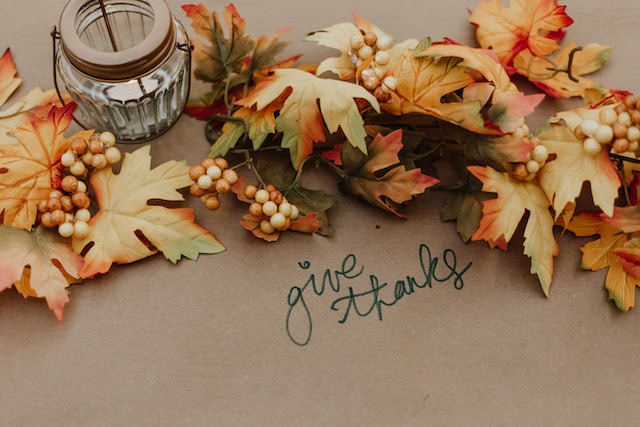First posted to: https://surehopecounseling.com/avoiding-gratitude-cliches/

The fall season comes with its many clichés on its own, does it not? Pumpkin spice everything, sweater weather, and if you live in the south, kids dressed up for pumpkin patch photos in cold weather outfits when we still have highs in the 80s in October. Don’t get me wrong, I love all of these things and welcome the beauty of the fall season, clichés and all. But as we focus on gratitude in the season of Thanksgiving, it is very easy to miss the really good stuff that makes gratitude worth practicing, often because we have a very surface-level understanding of what a gratitude practice should look like. Today, we will talk about what your gratitude practice can look like and tips for avoiding those gratitude clichés.
We talk a lot about gratitude at SureHope, and it’s for good reason. Research tells us that those who practice gratitude regularly have decreased levels of anxiety and depression. This is certainly one of the aspects of positive psychology. Gratitude is also a biblical commandment and antidote to anxiety (Philippians 4:6-9). So you can also read about gratitude here, as well as here and here! There are some great ideas in there for how to practice gratitude but today we’ll look at it a different way.
First, I’d like for you to take out a piece of paper and write down the things that you feel like you are supposed to be thankful for. For many of you, this will sounds something like “my job, my family, my home, my church.” While these are WONDERFUL, worthy things to be grateful for, it can be easy to make this list and call it a day. So I’d like for you to take it a few steps further to allow this gratitude list to release the happy hormone dopamine, which allows your brain to stay positive by becoming addicted to gratitude. Take these steps after you’ve made that list.
Step 1:
-Be specific. If you are grateful for your job, name why.
“I am grateful that I have job security as well as flexibility to work and be present with my family.”
“I am grateful for my husband/wife who provides me with companionship and humor.”
“I am grateful for my church, where I can worship God freely.”
Step 2:
-Name how you are thankful for it right now.
“I am grateful that my job is so flexible that it allowed me to attend my son’s Thanksgiving program today.”
“I am grateful that my friend reached out to me and sent me an encouragement today when I was having a hard time.”
Step 3:
–Meditate on it. Take a minute with each aspect of gratitude that you wrote down, and “relive” the moment or memory of what you are grateful for. Let’s use the examples above.
- Remember the feeling of attending your son’s Thanksgiving program. Did you feel proud? Look back at the photos or talk to your son about your feelings of pride and joy.
- How did you feel when your friend reached out? Relieved? Connected? Take moment and close your eyes, remember what it felt like to receive the message, and express your gratitude in prayer again.
When we are specific about our gratitude, it becomes more permanent in our minds and hearts. And yes, we do talk so much about gratitude in this season, but it is also about remembering. We know that all of the things that we have gratitude for are gifts and “every good and perfect gift is from above” (James 1:17). God, since the beginning, has asked His people to remember what he has done:
I will remember the deeds of the Lord; yes, I will remember your wonders of old. –Psalm 77:11
And you shall remember the whole way that the Lord your God has led you these forty years in the wilderness, that he might humble you, testing you to know what was in your heart, whether you would keep his commandments or not. –Deuteronomy 8:2
Having gratitude and remembering is an act of worship and obedience. Praying that you can avoid those gratitude clichés and feel the real gift of gratitude this season!
-Mary Shea – Learn more about Mary’s presentations and seminars here!


